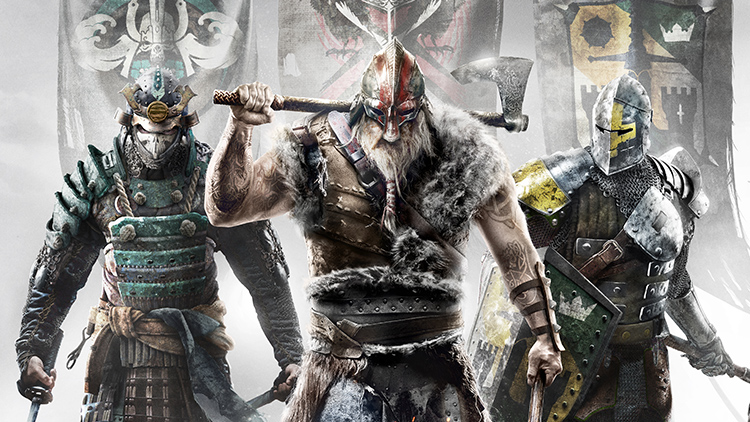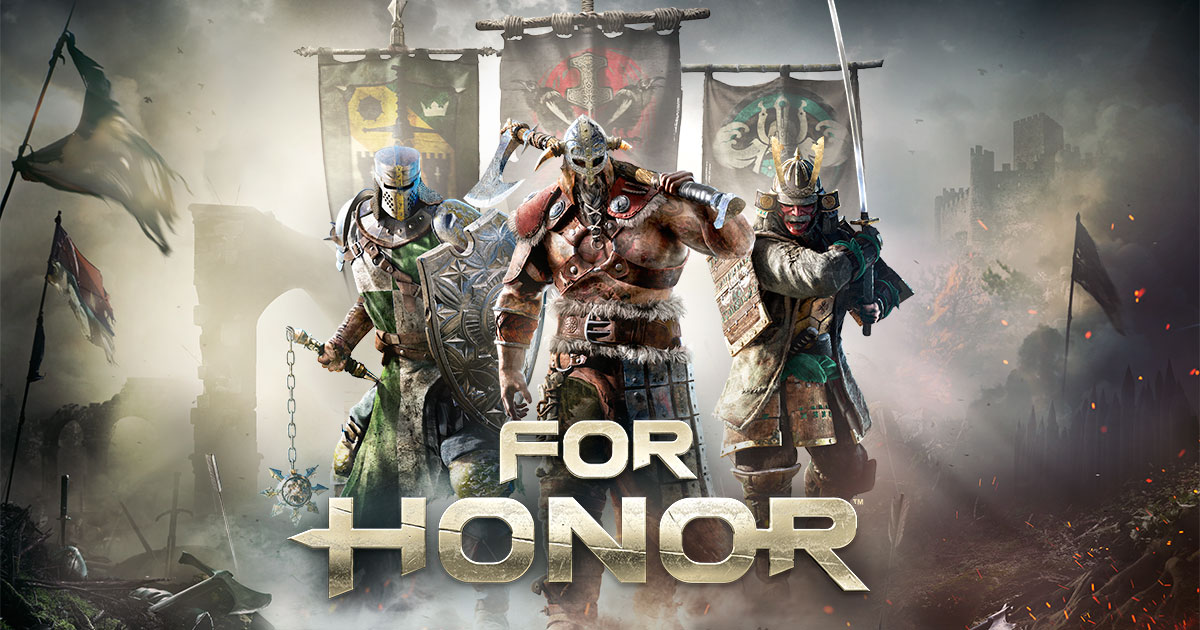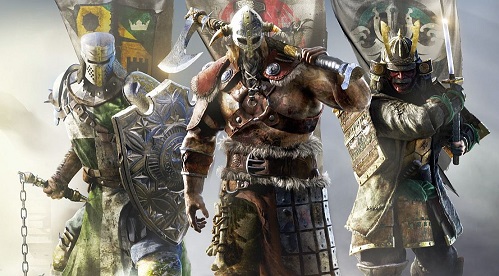
For Honor has had a lot to live up to. Described as a “shooter with swords”, the promise of gorgeous visuals and online multiplayer has been wetting gamers’ appetites since it was announced back in 2015. Given the medieval setting, however, many assumed it would be a clone of 2013’s Ryse. Thankfully the sophisticated combat system, heavy multiplayer focus and variety of gameplay modes means For Honor shines with originality and stands out from the crowd.
For Honor’s single-player campaign centres around a warlord named Apollyon who, for some ill-explained reason, wants to turn the land of Ashfeld into a never ending warzone. Players will be able to battle or join Apollyon while playing through the eyes of warriors from each faction – Knights, Samurai and Vikings. The plot lacks any sort of substance or masterful storytelling, which may be disappointing for some. What the campaign does offer however is an extended tutorial in the finer art of combat, with each chapter progressively introducing different tactics that can be used in multiplayer.
At first glance the combat system is simple. You have basic weak and strong attacks, a quick attack, a dodge move and can guard against enemy attacks. On your screen you are presented with a shield icon with three sides, and the side you have highlighted is the side you will attack and guard from. When facing opponents you will also see what sides they will be attacking from, so it’s a delicate balance of finding an opponent’s opening while also guarding against their angle of attack. It’s here the game’s sophistication comes into play – combat is generally slower than other action games, so players who take their time studying their opponent can easily outmaneuver them. If for example, your opponent is gearing up for a strong attack, you can quickly dodge and then counter with your own move. You do get the occasional player who will charge in slashing away with the quick attack button, but you’ll soon learn various strategies to overcome this. One such method is knocking back an opponent so they fall off a ledge to their impending doom – knowing your surroundings and leading your opponent to a trap is immensely satisfying.
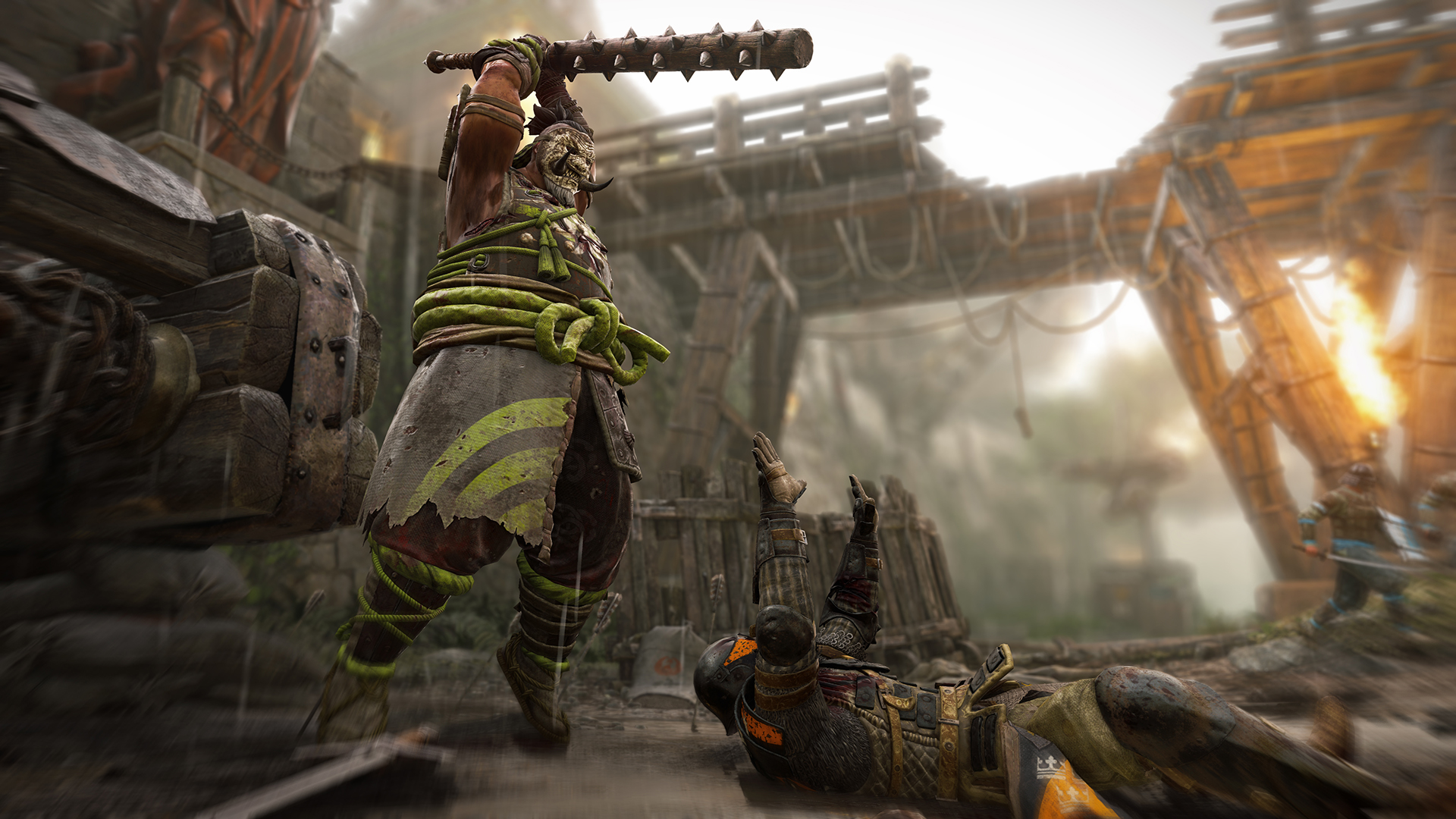
One important factor for combat is the different playable character classes. Vanguards are evenly balanced, providing a good well-rounded character for newbies to play with. Assassins specialise in quick footwork but have weaker attacks, so are best played defensively by dodging enemy attacks and waiting for openings. There are also Heavies which are more resistant to damage but have slower attacks, and Hybrids which are a combination of the three other classes and are generally more difficult to master. It’s going to come down to finding what suits your play style, and of course lots and lots of practice.
The various multiplayer modes on offer demonstrate just how adaptable the combat system is in For Honor, and will lead players to developing various strategies for when playing alone and when in teams. Duel mode offers classic 1-versus-1 gameplay, while Brawl mode increases the number to 2-versus-2. With Brawl in particular, you usually have two one-on-one fights happening simultaneously, but if one of the battles ends earlier than the other then the winning player can choose to support their team mate. Domination sees players fight to control zones on a battlefield and win the most points in 4-versus-4 matches. Skirmish requires players to kill enemies to obtain points, and once enough points are gained you have to eliminate the opposing team. Finally, Elimination is a 4-versus-4 mode where players are instantly eliminated from the round if they are defeated. The team with the most (or any) surviving members at the end of the timer wins. The modes are varied and engaging enough to offer unique experiences from each other, so there’s plenty on offer to keep you busy.
Unfortunately, For Honor uses P2P networking for online gameplay and does not have dedicated game servers. Much like Destiny, this presents some significant issues with matchmaking. If for some reason a player quits mid-game, it’s not unusual for the game to pause while it reconfigures the match’s settings. Quite often you will also be kicked from matches without explanation. Personally I couldn’t last more than three to four matches without experiencing a connection issue, which got considerably annoying.
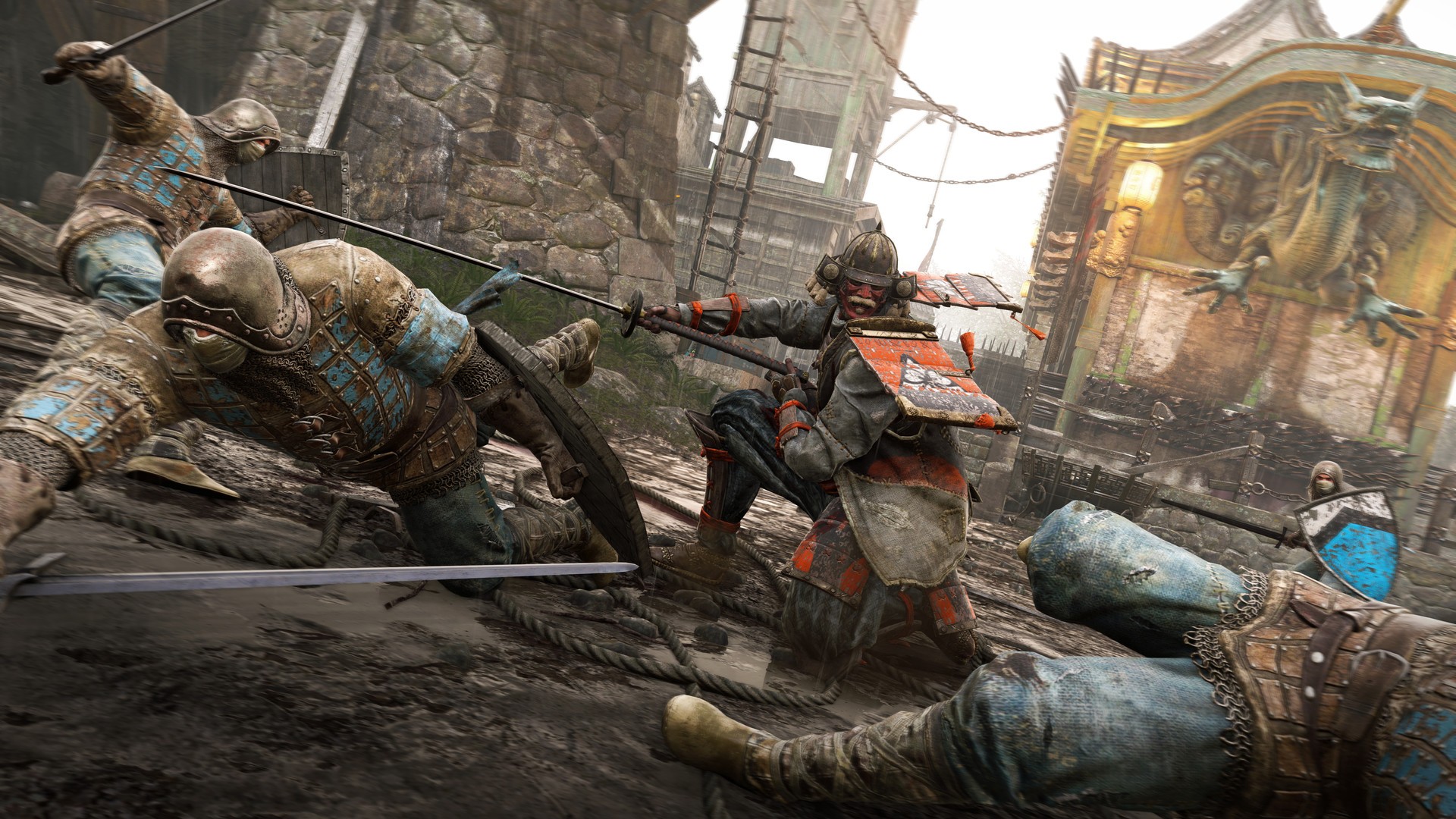
Visually, For Honor is a gorgeous looking game. The animations of the warriors feels natural – you get the impression that their armour and weapons are heavy and weigh down the character, yet also touching on realism and not dragging the gameplay down. The world is also brought to life, with arenas featuring brilliant stone castles, creaky wooden bridges and woodland areas. When a lot of action is happening on screen it’s not uncommon for the game to suffer framerate drops, which is a little disappointing and detracts from the overall experience.
For Honor is a great game that unfortunately suffers from a lack of final polish. There are no dedicated game servers which means matches are often interrupted or you’re booted from the game entirely. The single-player campaign lacks a compelling plot and is just an extended tutorial, while framerate issues also detract from the overall experience. Hopefully Ubisoft iron out some of these issues with future updates, but otherwise they are bearable and For Honor is an enjoyable experience.
- Engaging combat - Variety of online modes
- P2P connections mean frequent drop-outs - Uninspiring single-player campaign - Framerate issues

